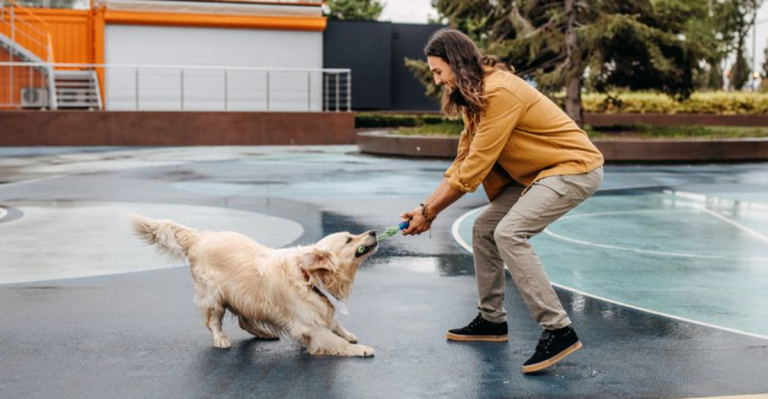15 Ways You Might Be Confusing Your Dog Without Realizing It

Dogs don’t come with a user manual, but their confusion is usually human-made. Recognizing a few common slip-ups will ensure smoother training, calmer behavior, and a relationship rooted in trust, not second-guessing. So, here are some cues that can turn frustration into harmony and commands into a shared language.
Inconsistent Commands

Canines process sound cues, not complete sentences. Swapping between “down,” “lay,” and “settle” makes you sound like a glitched-out jukebox. So, begin by picking a cue and sticking to it. Language roulette doesn’t translate well across fur and paws.
Name Misuse

A pup’s name should act like a bell, meaning it should ring only when something matters—tossing it around dozens of times daily with no action attached? You’re training background noise. Make names count, or risk becoming easy to tune out.
Rule Switching

Picture this: your dog’s internal lawbook updates daily. That’s what it feels like when today’s “yes couch” becomes tomorrow’s “off now.” Rules must stay steady, or they won’t mean anything. Don’t rewrite the constitution every weekend because clarity beats confusion in the household hierarchy.
Mixed Emotions

Dogs don’t just hear commands—they hear everything. Saying “good boy” in a worried voice or scolding with a smile short-circuits communication. A mixed tone means a mixed message. Your pup’s not ignoring you; he’s decoding emotional static. Speak with clarity, or expect a lot of head tilts.
Missed Signals

Do you think dogs don’t express themselves? Think again. Subtle tail drops, lip licking, or random yawns are silent alerts. Overlook them, and you’re skipping entire emotional dialogues. Those tiny gestures aren’t quirks; they’re fluent expressions.
Erratic Walking

Walks should never resemble an obstacle course. Erratic shifts in speed confuse animals trying to sync. Strolls need structure. If you change tempo every block, you train your companion to lunge, stall, or zigzag into lamp posts.
Conflicting Trainers

When everyone in the house trains differently, it’s like teaching algebra with three textbooks in different languages. Dogs need consistency, not a democratic mess of commands. One says “off,” another says “down,” and your pup spins in a place like a broken Roomba.
Delayed Feedback

Your pup connects actions with outcomes in about 1.3 seconds. Praise them five seconds after a good “stay,” and they’ll be proud they sniffed the rug. Timing matters. Behavioral reinforcement doesn’t come with a rewind button. Praise or correct at the moment—or miss your window completely.
Negative Overload

“No” is a dead-end. It tells your companion what not to do but never offers a detour. Want real improvement? Redirect. Teach alternatives instead of hollering negatives. Swapping “don’t chew that” for “grab your toy” guides behavior without sparking frustration or blank stares.
Routine Shakeups

Four-legged friends anticipate events by tracking consistent patterns. Shifting meal or potty schedules causes stress, howling, or surprise puddles. It’s not about stubbornness; it’s about structure. Skip the structure, and the fallout lands squarely on your living room carpet.
Fear Reinforcement

Have you ever noticed your dog freaks harder during storms after you’ve comforted them? That soothing attention may be encouraging their panic. Neutrality is preferred instead. Canine’s mirror reactions so project calm, and you diffuse fear. Plus, stop with the excessive cuddles to prevent inviting emotional aftershocks next time lightning strikes.
Sniff Blocking

Those curbside sniff sessions are nothing but your dog’s detective work. Cutting one short mid-sniff is like snatching a book mid-sentence. Dogs decode the environment through smell because sniffing calms nerves and sharpens awareness. Let the investigation unfold. It’s mental stimulation, not a waste of time.
Fragrance Overload

Your citrus cleaner smells fresh to you; however, it’s an olfactory explosion to any pup’s supercharged nose. Dogs detect parts per trillion. So, overwhelming scents blur familiar trails and trigger stress responses. Try scent-free products sometimes. Your pet’s nose will feel much better.
Body Language

Posture trumps pronunciation. You can coo sweet nothings, but you’re broadcasting tension if you tower over your dog with stiff arms. Dogs tend to read physical cues faster than verbal ones. Relax your stance. What your body says matters way more than your lips ever could.
Unrealistic Expectations

No creature exists in the womb knowing how to live among humans. Expecting instinct to replace guidance is a guaranteed letdown. Explicit instruction beats silent expectations. Offer direction, then reinforce because they aren’t psychic; they’re a student.






